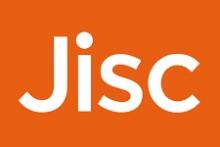Jisc assets report will drive collaboration

To gain an unprecedented insight into the UK’s academic research infrastructure assets, Jisc has collected the views of leading bodies from across the sector.
The new report, Optimising the UK’s university research infrastructure assets, aims to help identify more opportunities for collaboration, attracting investment, developing skills and reducing bureaucracy. The UK’s university research infrastructure assets include equipment, facilities and the laboratories commissioned for research use across all disciplines.
The report outlines a range of perspectives from interviews with leaders and experts at 15 groups and stakeholder organisations from the UK’s higher education, research and innovation sector.
It highlights opportunities for new collaborative approaches to optimise the use, sharing, efficiency and sustainability of research infrastructure assets, and was funded by UK Research and Innovation.
The report identifies four key areas of opportunity for the research sector, which it recommends should receive extra investment to promote knowledge exchange and the commercialisation of research and development:
1. Strategy and policy: the sector should work together to reduce bureaucracy, take a collective view on environmental sustainability and security, reduce the pressure on laboratory space, and plan for investment in assets across the UK.
2. People and culture: increase diversity and equity within research teams across the sector and help career progression and personal development for all research professionals.
3. Funding, costing and charging: develop new costing, charging and sharing models that reward the development of new and more accessible collaborative approaches, as well as the utilisation of assets by more groups including SMEs.
4. Digital, data and technology: use high-quality data across the research infrastructure assets landscape to power new technologies for efficiency and innovation, including artificial intelligence, developing a strategy for more remote labs to extend access, using sustainable asset registers and persistent identifiers for open research.
The stakeholder group will use the research to develop recommendations and sector-wide approaches. These will help the sector utilise the UK’s research infrastructure assets more effectively, efficiently and sustainably.
Dr Victoria Moody, director of research and higher education for Jisc, said: “Managing, sharing and improving the sustainability of the UK’s university research infrastructure assets is a complex challenge: we hope to find ways to improve how all organisations involved in research and development collaborate and tackle new challenges, such as the rapid adoption of AI.
“We found a real appetite for improved ways of working and increased collaboration across the sector: for a more coherent approach to sharing what works and changing what doesn’t, using data, digital and technology solutions.”
Willoughby Werner, senior strategy adviser at UKRI added: “We want to deliver more from the same level of investment and this report will help us do that by boosting collaboration between the HE sector and industry, increasing inclusion and developing new cost models.”
Antony Chapman, senior portfolio manager, Engineering and Physical Sciences Research Council, UKRI said: “Bringing this vital knowledge together will help the sector expand the range of what is possible for research and development within the existing setup.”
To read the summary of the report, visit the Optimising the UK’s university research infrastructure assets page of the Jisc website.






